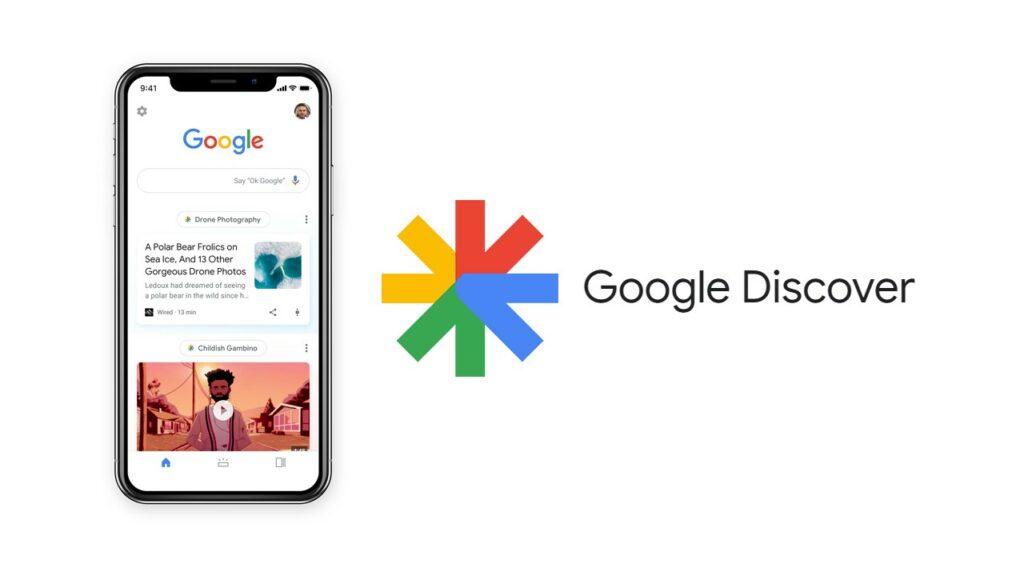These days, businesses are vying for attention in a crowded online space. It’s very important to find innovative ways to reach your audience. If you’re eager to increase website traffic without splurging on advertising, Google Discover offers a promising solution.
Google Discover has swiftly become a dominant source of traffic for news websites, surpassing traditional channels like Google Search and Facebook. Despite its significance, many publishers underestimate its potential, often due to inaccurate tracking via tools such as Google Analytics. Even for those aware of their Google Discover traffic, optimizing it remains a challenge.
In this article, we will explore the mysteries surrounding Google Discover, providing insights on accurately measuring traffic and strategies for maximizing its impact.
Table of Contents
What is Google Discover?
Google Discover serves as your personalized news aggregator, offering a curated selection of articles and stories picked specifically for your interests. It achieves this by analyzing your search history, website visits, and YouTube activity to gain insights into your preferences.
This personalized approach sets it apart from traditional news feeds. Rather than relying solely on pages you’ve liked or followed, Google Discover uses a comprehensive understanding of your online behavior to present content that aligns with your tastes.
When you open Google Discover, you’re greeted with a diverse array of topics and articles, each chosen with your preferences in mind. Over time, the platform refines its recommendations based on your interactions, ensuring that the content remains relevant and engaging.
You can easily access your Google Discover Newsfeed right from your Android mobile phone. On most devices, all you need to do is swipe right from your home screen, and there it is. You can also find it within the Google Search app, available on both Android and iOS devices. Just tap on the Google Discover option in the bottom menu to dive into your personalized feed. Additionally, you can access it directly through the Chrome browser.
Given its widespread availability across various platforms, more and more people are checking out their Google Discover Newsfeed to stay updated on topics that interest them.

Is Google Discover Equally Important for All Countries?
Accessing Google Discover varies depending on the device: on iOS, it’s through the Google app or Chrome, while on Android, it’s a left scroll on the Google app. Given this, Discover’s significance differs across countries, with higher Android usage countries likely experiencing more traffic.
For instance, in Europe, where 71% of users have Android devices, Discover holds more weight. Conversely, in the US, where Apple dominates with a 57% market share, iOS penetration is crucial.a
Why Google Discover Matters for Publishers and Its Traffic Share
Google Discover ranks among the top traffic channels for media, potentially even surpassing others for some outlets. While publishers have been tight-lipped about their Discover traffic, insights reveal its significance.
Marfeel, tracking over 3,000 publishers, notes Discover comprises 20–25% of all traffic, ranking as the second-largest source. Chartbeat, analyzing 4,500 publishers, corroborates Discover’s substantial share. Regional data shows Spanish-speaking and European countries as hotspots for Discover traffic.
For instance, Liberation’s SEO cites Discover driving up to 80% of SEO traffic in France, while TNL Mediagene in Taiwan sees Discover contributing up to 45% of page views for lifestyle content. Discover’s impact varies by region but remains a pivotal traffic driver for publishers worldwide.
Assessing the Value of Google Discover for Your Site
The initial step in gauging Discover’s role in your marketing strategy involves understanding its potential value in driving traffic to your site. For sites prioritizing traffic generation, particularly those reliant on display ads or affiliate links, Discover can emerge as a valuable traffic source.
However, for other site types, determining the value of Discover traffic can be a puzzle. Given the absence of a dedicated source in Google Analytics, it’s challenging to attribute Discover traffic to conversions or other engagement metrics beyond landing page visits, which can be tracked via Google Search Console.
Discover showcases a range of content, including trending and timely pieces from publishers and news sites. Occasionally, it may even spotlight high-converting pages like e-commerce product pages, tailoring recommendations based on user interests and search history.
It is crucial to grasp the volatile nature of Discover. It operates unpredictably, with traffic surges one day and droughts the next. Even sites experiencing consistent traffic from Discover can witness abrupt declines without clear explanations. Google’s recent updates to Discover guidelines shed light on factors contributing to this volatility, such as content testing and user interest shifts.
How to Grow Your Google Discover Traffic?
Here are a couple of steps you can take to boost your traffic:
Boost Your Traffic with Engaging Headlines
Just like Facebook’s news feed, people use Google Discover to find interesting content. Crafting captivating headlines is key to grabbing their attention as they scroll through their feed. While Google advises against clickbait, it’s also clear that catchy headlines perform better. So, strike a balance. Avoid sensationalism that misrepresents your content, but don’t shy away from creating headlines that entice readers to click. Research suggests that headlines with a bit of intrigue and emotion outperform dry, factual ones. Inject excitement and curiosity into your headlines, using strong and emotive language to draw readers in. Consider implementing A/B headline testing in your content management system to fine-tune your approach.
Follow Google’s Guidelines and Stay Positive
While experimenting with headlines and content is encouraged, it’s crucial to adhere to Google’s news policy. This means steering clear of negative, NSFW, or misleading content. Avoid headlines that promise more than your article delivers, as this could lead to penalties under Google’s guidelines. Additionally, content with an explicitly negative tone tends to perform poorly on Google Discover. Since the introduction of the Helpful Content Update, Google has penalized websites that publish unhelpful content. Make sure that your articles align with Google’s Helpful Content Policy to maintain visibility in Google Discover.
High-Quality Images
Go for captivating, high-quality images that entice clicks. Image selection often flies under the radar, but it can significantly impact your article’s success.
When choosing images for Google Discover, aim to immediately grab attention. Steer clear of dull stock photos and opt for visuals that evoke emotion and excitement. Enhance images to stand out even more, perhaps by adding overlays or text labels.
Remember, using high-resolution images is key, with a minimum size of 1,200 pixels on the smallest side. Images featuring people, especially those displaying strong emotions and making eye contact, tend to drive higher click-through rates.
Consider the difference in engagement between an article featuring a dynamic, edited image, like one showcasing emotion and enhanced with relevant elements, and one with a lackluster, uninspiring stock photo. Investing in compelling imagery can significantly boost your article’s visibility and click-through rates on Google Discover.

Use Your Authority on Relevant Topics
Boosting your traffic from Google Discover involves understanding the topics where your website is recognized as an authority. Google Discover recommends content based on authority and user interests, so identifying your site’s strong suits is key. Look into your performance metrics in the Google Search Console to pinpoint these areas of expertise. Take note of which topics consistently drive organic traffic in Discover and focus on creating more content in those realms.
Utilizing ChatGPT can also help by analyzing the URLs of your top-performing articles to determine which topics you should prioritize for increased Discover traffic. Simply paste the URLs of your top 25 articles into ChatGPT and prompt it to identify the themes and topics you should focus on to optimize Discover visibility.
Max Image Preview Tag
Google’s latest case study reveals a staggering 333% increase in clicks by incorporating the Max Image Preview tag, a simple yet powerful tool for enhancing image visibility on your website.
By implementing the Max Image Preview meta tag, you signal to Google the preferred image size for previews displayed in Google Discover. This means larger, attention-grabbing images alongside your articles, maximizing their visibility and click-through rates in the Discover feed.
Including this tag ensures that your content stands out and attracts more traffic from Google Discover. Learn how to integrate the Max Image Preview tag on your website for optimal results.
Loading Speed
When it comes to Google Discover and Search, page speed is a crucial factor. Google prioritizes fast-loading pages for inclusion in Discover, making it essential to optimize loading times.
One effective method to enhance loading speed is by implementing AMP versions of your articles. If AMP isn’t part of your website strategy, you can evaluate your page speed using the Google PageSpeed tool. Simply paste your article URL into the tool to identify areas for improvement and ensure optimal loading performance.
Emphasize Transparency
Transparency is a cornerstone of Google’s News Policy, aimed at combating misinformation. Publishers are encouraged to provide clear information about their organization and authors to establish credibility.
Crafting a comprehensive About Us page detailing your company and network, along with detailed bio pages for each author, reinforces transparency. Additionally, ensure your website includes a contact page, further enhancing credibility and trustworthiness.
Diverse Content Formats
Diversifying your content formats can significantly enhance your presence on Google Discover. Research indicates that articles featuring lists are particularly favored, such as ‘5 ways to write better headlines.’
Exploring Google Web Stories presents another exciting opportunity. With a dedicated carousel in Google Discover, these stories remain relatively underutilized by publishers, offering a potential traffic boost. Creating web stories is made easy with accessible tools.
Additionally, incorporating video content, especially during live events, can drive engagement and visibility on Google Discover.
Evergreen Content
Maintaining the relevance of evergreen content is essential for sustaining traffic from Google Discover. Regularly refreshing timeless content ensures its continued appeal to audiences. Numerous examples demonstrate a surge in Google Discover traction following updates to evergreen content.
Use Facebook and Twitter
Boosting engagement on Facebook and Twitter can directly impact your visibility on Google Discover. Articles that garner clicks, likes, shares, and comments on these platforms often see increased success on Discover. Since Google tends to showcase content from websites users have previously visited, maximizing engagement on social media can lead to more traffic from Google Discover. Similarly, engagement through newsletters and web push notifications can also contribute to Discover visibility.
Encourage Interaction
Encouraging interaction with your content is key to improving your presence on Google Discover. Articles with higher numbers of comments tend to perform better, highlighting the importance of fostering engagement among your audience.
Publisher Center
While not an official requirement, adding your website to the Google Publisher Center can significantly impact your Google Discover traffic. Many clients have experienced a notable increase in Discover visibility after joining the Publisher Center.
Stay Ahead with Competitive Analysis
If you’re hitting roadblocks in garnering Google Discover traffic, it’s time to take a peek at your competitors’ sites. While you can’t access their exact traffic metrics from the Discover feed, you can glean valuable insights and content ideas.
Explore whether their content features unique images or engaging videos. Are they covering a diverse range of relevant topics that resonate with their audience? While avoiding outright duplication, analyzing competitor strategies can spark fresh inspiration and uncover untapped potential for your own content approach.
Google Discover presents a significant opportunity for businesses and publishers alike to expand their online presence and drive traffic to their websites. By understanding the intricacies of Discover, organizations can learn the full potential of this powerful platform.
Want to learn more about optimizing your traffic with Google Discover? Drop us a comment below and visit our website for in-depth insights and expert tips!



















